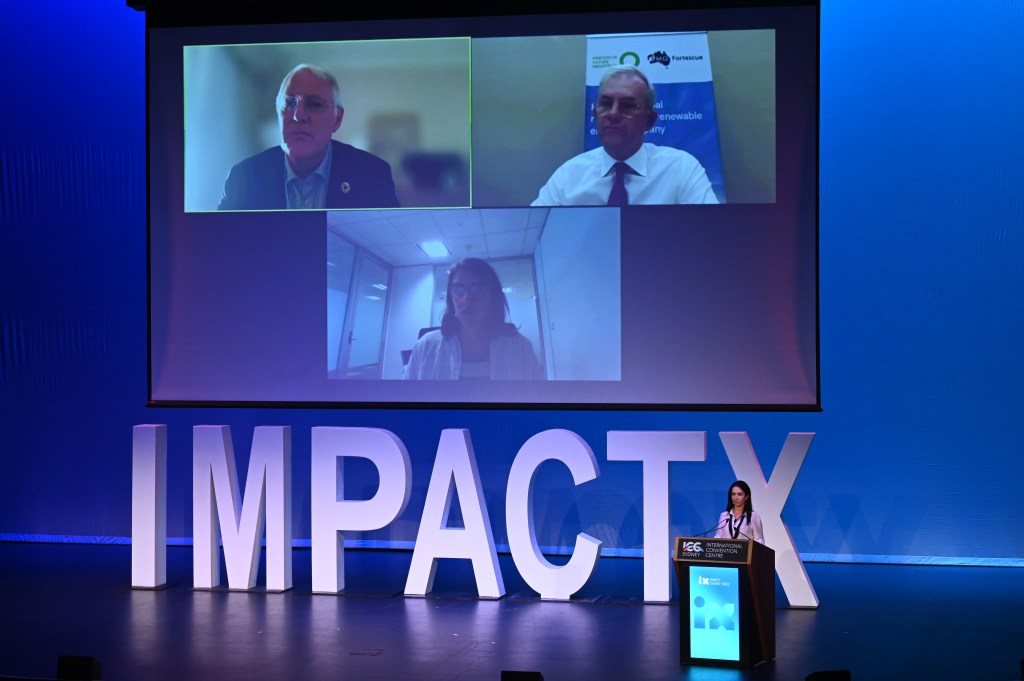The chief of the green division of Andrew Forrest’s $54 billion mining behemoth says Australia is poised to be a leader in green hydrogen.

Climate experts believe ‘green hydrogen’, or renewable hydrogen, has the potential to reduce carbon emissions and store and transport renewable energy across the globe. Chief executive of Fortescue Future Industries (FFI), Mark Hutchinson, says Australia is poised to be a global leader in this industry.
“The opportunity for Australia is enormous,” Hutchinson says, speaking from COP27 via a Zoom conference at the ImpactX Summit on November 10th. “You can think about Australia as being the Saudi Arabia of the world for green hydrogen.”
Forrest launched FFI in 2020 as a vehicle to pursue green energy opportunities, and achieve Fortescue Metals’ goal of carbon neutrality by 2030. FFI’s main game was green hydrogen – about 15 million tonnes of it by 2030. Hutchinson says the company is on track to deliver commercial quantities of green hydrogen by 2024 – it has already inked a deal with Germany to provide the country with 5 million tonnes of it by 2030. That’s 30% of what the country needs to replace its reliance on Russian energy.
“You can think about Australia as being the Saudi Arabia of the world for green hydrogen.”
– Mark Hutchinson, CEO of Fortescue Future Industries
“It’s a mechanism really to get power from one part of the world to the other,” Hutchinson explains. “We use renewable energy – a lot of it – and we strip hydrogen out of water. Then we store that hydrogen like a battery and ship it around the world.
“We [Australia] have the land, the sun, the wind, the deep ports, but also, we have the political stability and that’s really important because obviously Europe has looked to Russia in the past for the gas supply, and that didn’t work out too well.”
Not all experts share Hutchinson or FFI’s view, and some believe given the large costs involved with producing green hydrogen, pursuing it is not economical. But to that, Hutchinson says we should look to the United States.
“America is leap-frogging everybody by bringing out Inflation Reduction Act, which subsidises the production of green hydrogen, making it competitive with gray hydrogen today,” he says.
The Inflation Reduction Act, introduced earlier this year, aims to curb inflation by reducing the budget deficit, lowering the cost of prescription drugs and promoting clean energy sources. It includes a $3/kg incentive for zero-carbon hydrogen, which makes it competitive, if not cheaper than, gray hydrogen.
“If I’m a buyer of industrial hydrogen, I can get green hydrogen at the same price as gray hydrogen today. So, what am I going to do? Am I going to develop green or gray, if it’s the same price?” Hutchinson asks.
While FFI is making strides in the green hydrogen market, Shell, the $295 billion oil and gas multinational is also in the race. Shell is developing one of the world’s largest green hydrogen facilities in Rotterdam, with plans to supply green hydrogen to the shipping industry in just two years. Global gas and engineering company, Linde, is also building an electrolyser to produce green hydrogen in New York, with the plant expected to go live in 2025.
Australia does not currently have any incentives for zero-carbon hydrogen, but Keith Tuffley, vice chairman and global co-head, sustainability & corporate transitions, Citi, says the Government’s tune is changing.
“The tone from the Australian Government on the ground is entirely different to where it was 12 months ago,” Tuffley, who is in Sharm El-Sheik for the COP27 conference, says. “It’s far more progressive, and it’s great to see.”